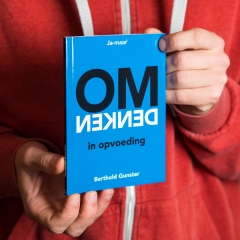Huh?! - the Dutch art of flip-thinking
The pessimist sees the glass as half empty. The optimist sees it as half full. This book takes a third approach: where is the tap?





Author: Berthold Gunster
Appearance date: 1-12-2018
ISBN: 9789400510647
240 pages
Huh?! - the Dutch art of flip-thinking
BoekenThe pessimist sees the glass as half empty. The optimist sees it as half full. This book takes a third approach: where is the tap?
Imagine this: you've got a great idea, and all you hear are yes-buts. 'Yes, but that's been tried before, and it didn't work.' 'Yes, but shouldn't we just let it sit for a while?' 'Yes, but what if it doesn't work ...' All those yes-buts make you feel that every attempt at innovation will be buried in a swampy morass of seemingly sensible objections.
There's another way: the yes-and attitude. This open-minded perspective emphasizes what can be done, appreciating possibilities. With this attitude we see past the dragons to the path forward. The result? Creativity and innovation.
This book is about the transition from a yes-but to a yes-and way of thinking; from thinking in terms of problems to thinking in terms of opportunities. When we approach a problem with this orientation, novel solutions can sometimes be surprisingly easy to discover. Looking at a problem from a new angle, even just a quarter-turn, can lead to a big insight, with so little effort. We don't have to fight our problems; we can transform them into opportunities. We can make them our allies.
The art of turning problems into opportunities can be learned. It's a type of psychological jujitsu. The technique this book introduces is called Omdenken in Dutch, which you could translate as flip-thinking. It not only leads to a solution to an existing problem, but opens new vistas of possibility. As a caterpillar morphs into a butterfly, a problem is flip-thought into a beautiful solution. This leads to a paradox: the more problems we confront, the better.



